Celebrated sculptor Gwon Osang eschews clay, marble, and metal, as they are too heavy for his liking. But his groundbreaking use of paper is far from lightweight in terms of recognition.
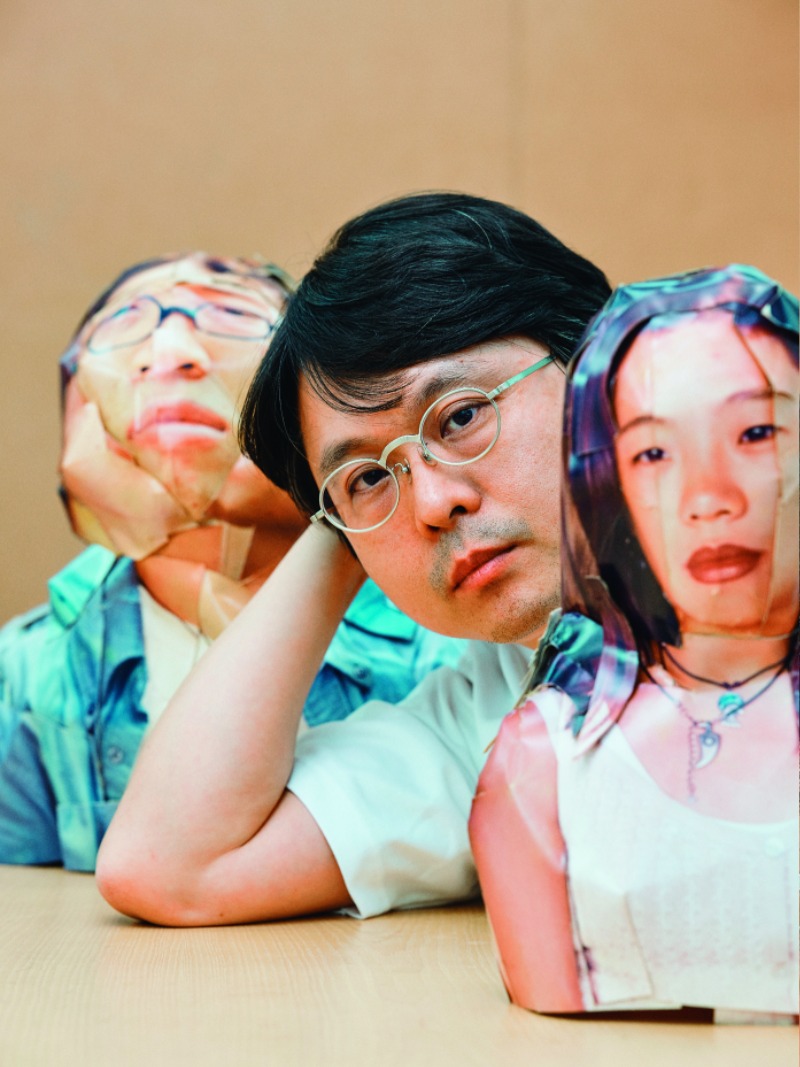
Gwon Osang poses between two of his early works. The artist is constantly questioning the essence of sculpture and experimenting with new sculptural forms.
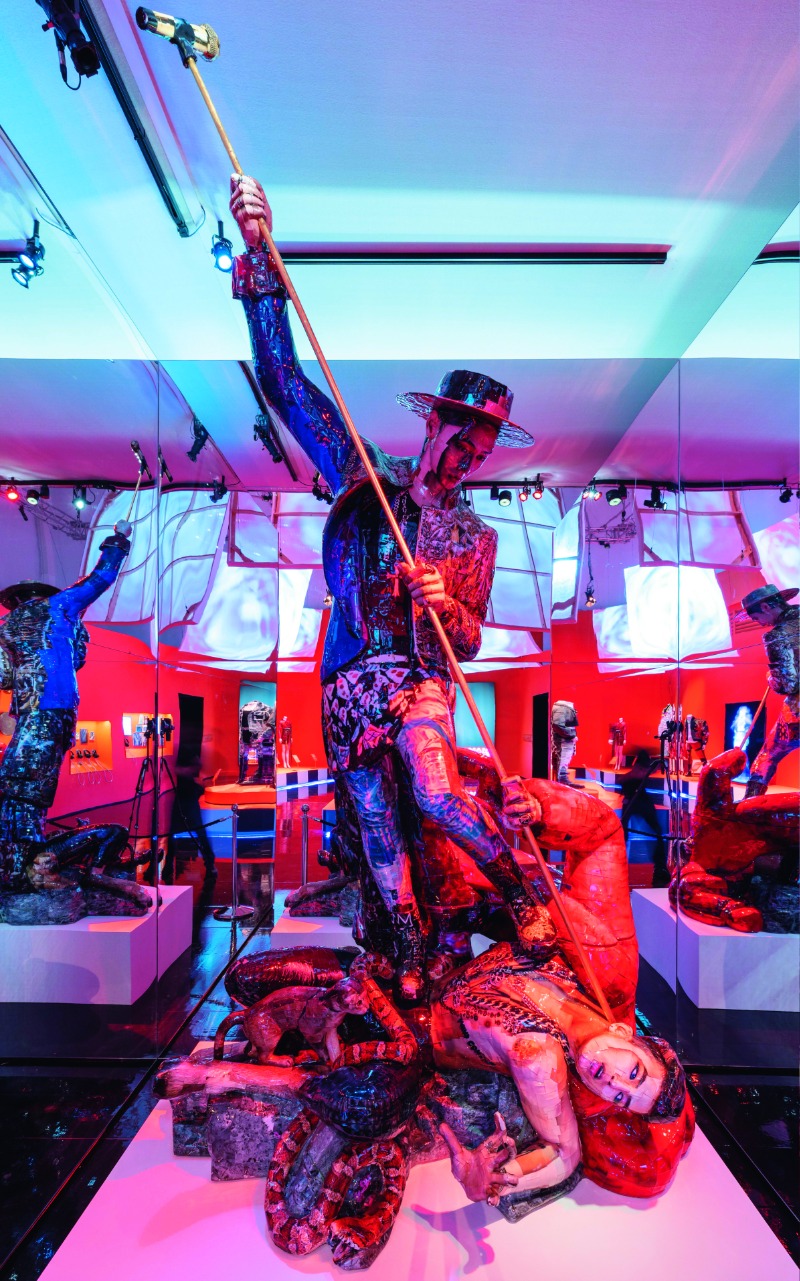
“Untitled G-Dragon, A Space of No Name.” 2015. C-print, mixed media. 380 × 176 × 105 cm.
In this sculpture, the singer G-Dragon is portrayed as the archangel Michael, defeating the demon Lucifer.
© Victoria and Albert Museum
Photographs are flat, one-dimensional images. But to Gwon Osang they are building blocks. He pieces together hundreds of thousands of photographs taken from all angles tothree-dimensional paper sculptures.
Gwon’s novel approach has garnered international attention, particularly in Britain. This year, the Victoria and Albert Museum in London held the “Hallyu! The Korean Wave” exhibition, which included his work “Untitled G-Dragon, A Space of No Name.” It is the transformation of a photograph of singer G-DRAGON into the archangel Michael slaying the demon Lucifer. The sculpture first became a sensation as the centerpiece of a special exhibition at the Seoul Museum of Art in 2015.
Gwon’s genius has also appeared at the Zabludowicz Collection, a contemporary art gallery, and the Roberts Institute of Art, a non-profit contemporary arts organization, both located in the English capital. Even the British rock group Keane has turned to Gwon. The cover of its 2008 album, “Perfect Symmetry,” features Gwon’s photo sculptures of the band members. Gwon has also collaborated with luxury houses Hermés and Fendi and brands like BMW and Nike.
While Gwon’s earlier works were largely reminiscent of Cubism, they are now striding toward surrealism and abstraction. The artist’s range of activities is also expanding.
We met Gwon at his studio in Gwangmyeong, Gyeonggi Province. There, two photo-sculpture busts dating back to 1993 — his earliest unconventional works — share space with his latest work-in-progress, which incorporates images of actress Kang Soo-young taken from websites.
What led to your “photo sculptures”?
When I entered the Sculpture Department at Hongik University in 1994, it was a place defined by the ambitions of energetic young professors and the passions of the study-abroad camp. There was an overwhelming sense that we needed “a new kind of art.” This was also the moment that the indie culture of the whole Hongdae [short for Hongik University] area was starting to take shape, along with the emergence of Generation X. The sense of one era ending coexisted with excitement about the start of the new millennium.
The sculpture studio I walked into on my first day of school had plastic-covered mounds of clay that people had been working on, and stones and pieces of wood strewn about everywhere. I remember thinking, “I’m on the small side, so the kind of sculpture that requires brute strength is not going to be easy for me to do.”
I looked for materials that would be easy to handle and easy to source, and I discovered photo paper. That’s how the photo sculptures began. In a way, I started making them to maintain a level of ease with my own body.
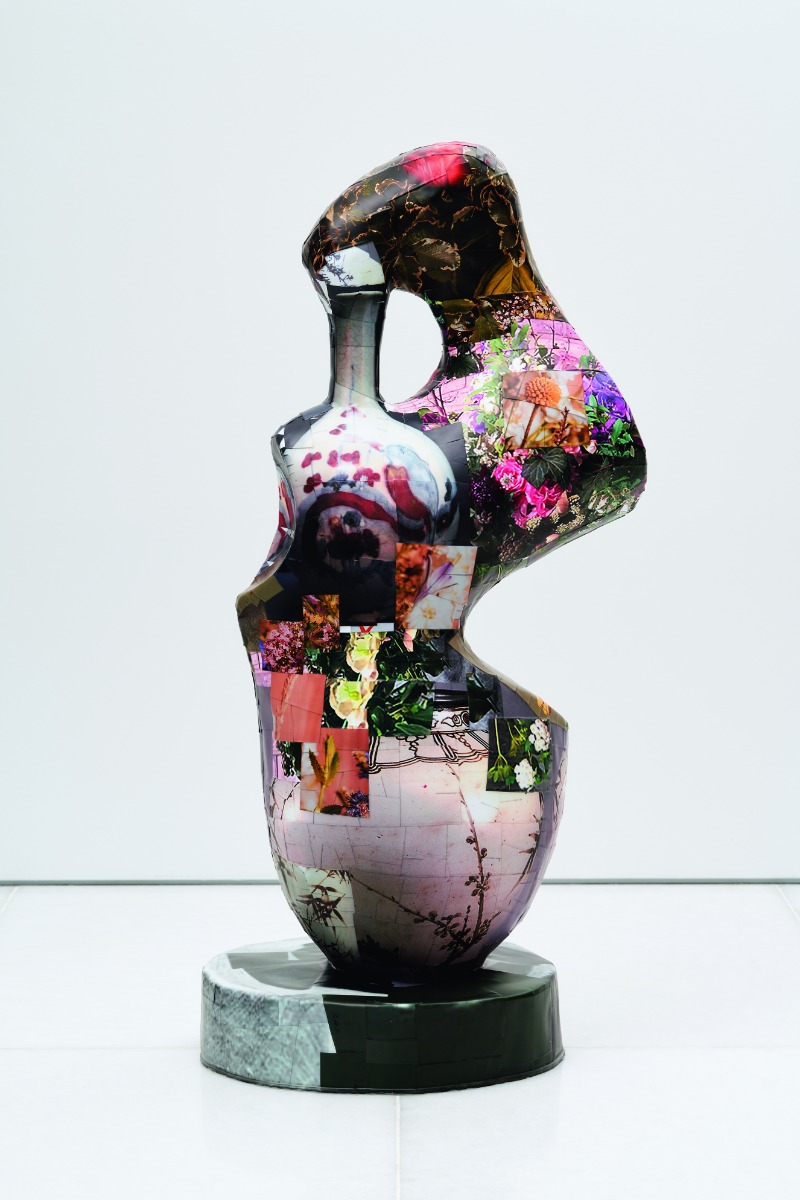
“Composition.” 2023. Archival pigment print, mixed media. 110 × 40 × 42 cm.
Paying homage to the works of famed sculptor Henry Moore, this piece showcases Gwon Osang’s signature use of gathered images and playful collage toa unique sculptural aesthetic.
© Arario Gallery
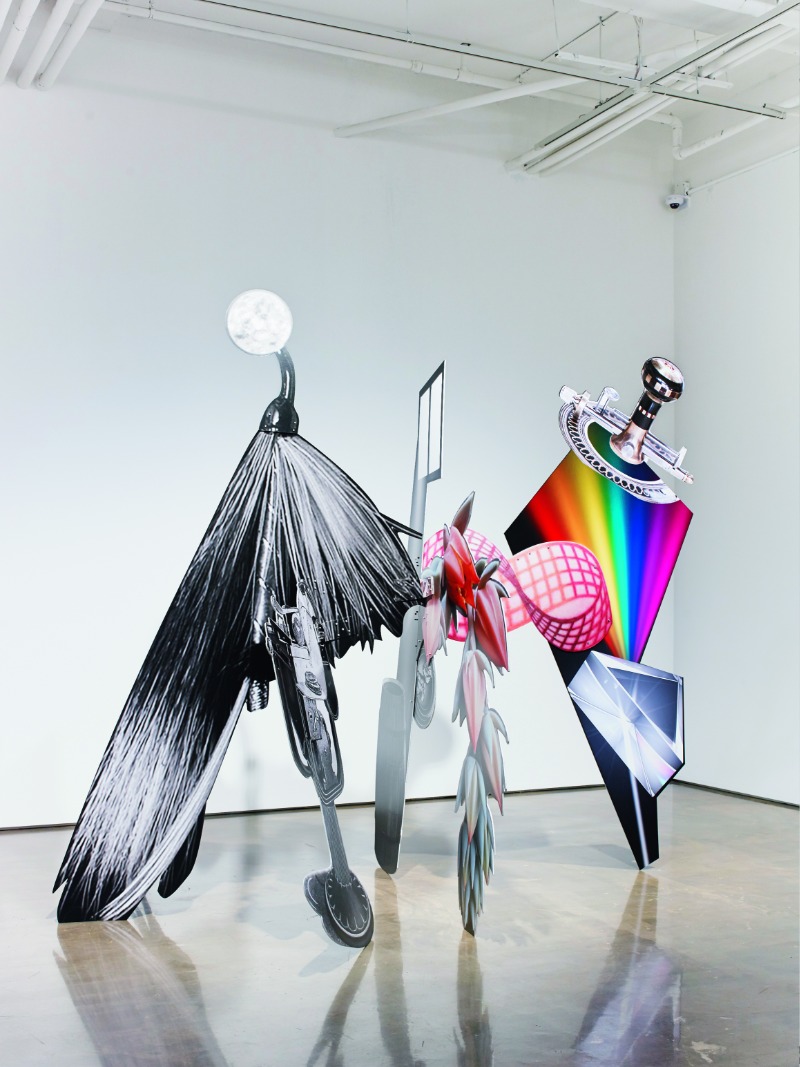
“New Structure 4 Prism & Macallan.” 2014. Inkjet print, aluminum. 275 × 316 × 197 cm.
The “New Structure” series turns “The Flat” series, which consists of countless images cut out of magazines, into three-dimensional works.
© Arario Gallery
You debuted while still at university.
LOOP, Korea’s first alternative space, opened in 1999, and the third exhibit was my “Deodorant Type.” It had the same style as “A Statement of 420 Pieces on Twins,” which is now part of the collection at the National Museum of Modern and Contemporary Art, Korea. I was lucky. My first solo exhibition came two years later, at Insa Art Space. After that, I received invitations from numerous galleries. Since 2005, I have exhibited exclusively at Arario Gallery.
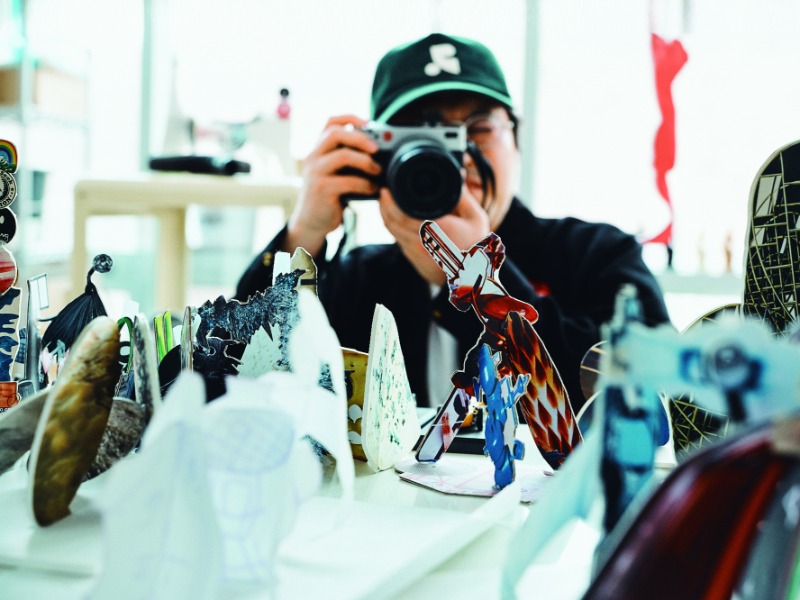
Seeking a material that was both plentiful and easy to handle, Gwon Osang struck upon photo paper — which then became the starting point of his photo sculptures.
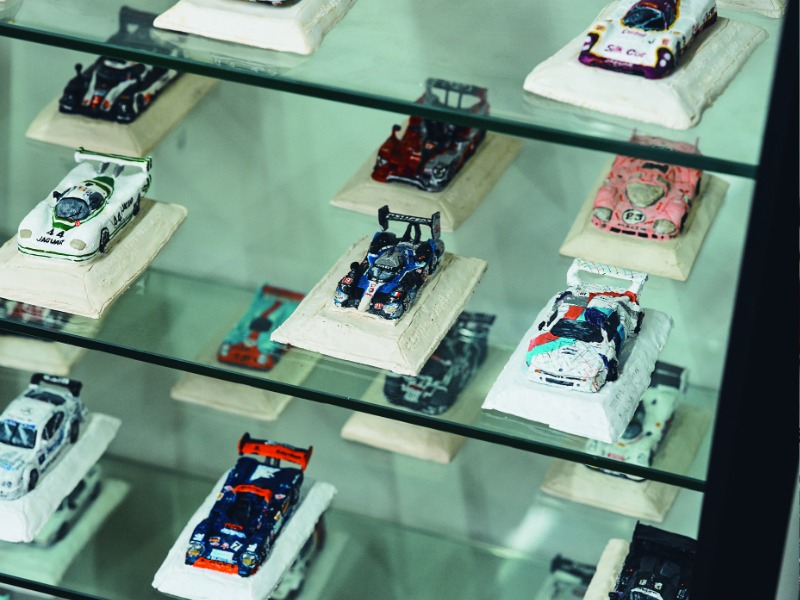
Based solely on photographic images found online and in magazines, these miniature cars made of clay and bronze are called “The Sculptures” series.
Please discuss the variety of your works.
The “Works” section of my website has ten parts. One major thread is the “Deodorant Type” series, which I have continued since my university days. Deodorant only neutralizes odor. It does not actually remove the root of the smell; it just covers it with a different scent. This is similar in nature to photo sculptures, where the combination of photos of anform an appearance that slightly differs from the original.
“The Flat” series has images of watches, makeup, and jewelry from magazine ads, which were composed as sculptures, then photographed and printed out again. Three-dimensional s are flattened in the pages of a magazine; they become a sculpture once more and are then transformed into a photograph.
Then there is the “New Structure” series, where “The Flat” series pops out of its photograph form to become three-dimensional again, and the “Relief” series, where these pieces are affixed to a wall.
My works can be organized as busts of humans and animals, and still lifes. The overall theme is representation through sculpting, and an exploration of weight/space/perspective/abstraction. I also started making furniture for my studio because all the leftover wood from my pieces felt like such a waste — and this became my collaborative project with artist Kim Min-ki. In 2021, I started making balloon-shaped sculptures with 2D images, made from photographs attached to 3D forms.
What about the cabinet full of car miniatures?
I used traditional sculpture materials for these, like clay and bronze. But these are cars and motorcycles made without ever looking at the real thing. They are based only on images I found online and in magazines and things. I call them “The Sculpture” series. I started with cars you see in the Le Mans race, and then I made art cars from BMW’s artist collaborations. I made about 100 miniatures, and not counting those sent to be exhibited there seem to be about 40 left here. These tiny cars are like miniature versions of huge rock formations that showcase nature’s grandeur. Very few people ever get to see the real thing, but we experience them through photographs.
What are photography and sculpting to you?
The first prize I received, even before the Kim Se-choong Sculpture Award in 2013, was the Sajin Bipyong Award (for photography criticism) in 2001. And my first exhibition abroad was a display of photographs at a Japanese museum.
The mold for a sculpture is conceptually comparable to the negative in analog photography. In this respect, I think the essential approach to sculpting and photography can be seen as the same.
One reason I continue to experiment is that I would like my own sculptures to stay in touch with the context of sculpture writ large and its history. I have explored the work of Renaissance sculptors like Gian Lorenzo Bernini, and I love the sculptures of impressionist painter Amedeo Modigliani too.
Recently, my interest has shifted to abstract sculptures to which I might attach photographs. That, in turn, has brought me to Henry Moore. Most sculptors, when they play with the human body, tend to transform the shape of muscle or bone — but Moore’s work comes as a surprise.
They say his freedom of form is something he earned by making charcoal drawings in the dark as he hid in air raid shelters during World War II. My own experience of isolation during COVID-19 helped me to better understand what he went through with the war, as well as his attachment to family. In my new work, you will encounter some of this new freedom I have gained by referencing Moore and his methods.
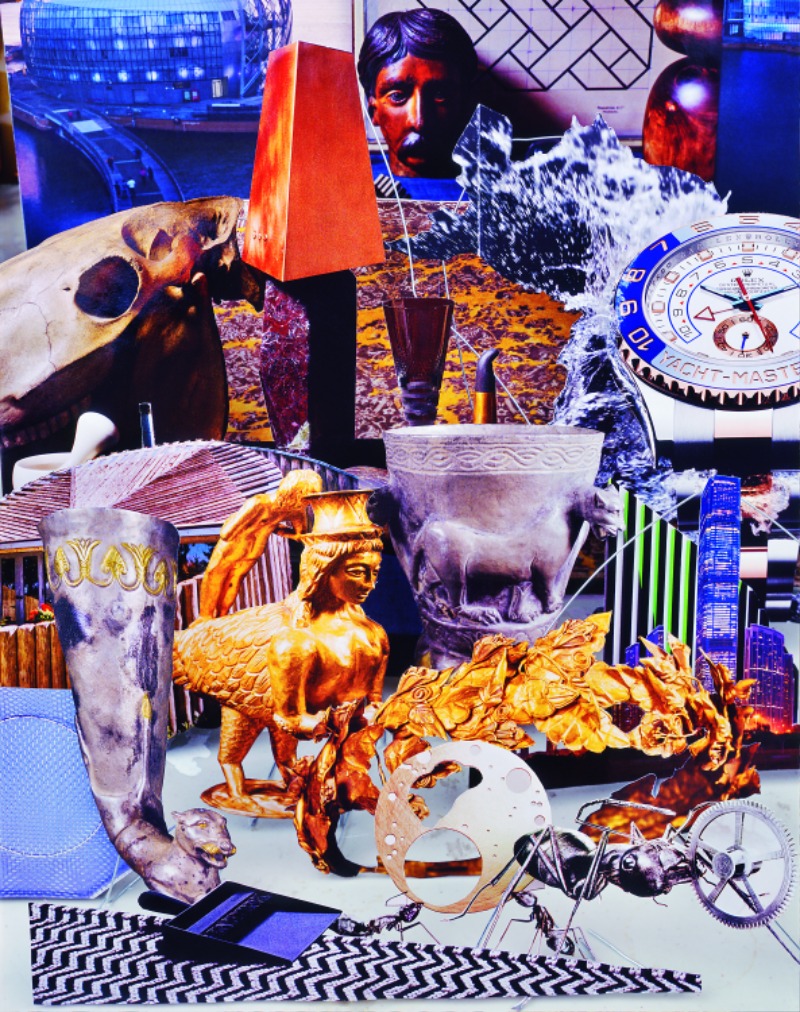
“2011 December.” 2012. Lightjet print, wood frame. 217.6 × 172 cm.
“The Flat” series involves taking contemporary images collected from magazines, using them tothree-dimensional constructions, and then re-photographing them.
© Arario Gallery
Cho Sang-inReporter, Seoul Economic Daily Newspaper
Heo Dong-wuk Photographer